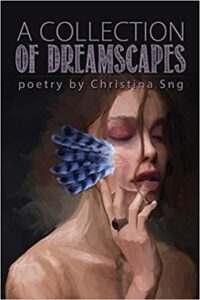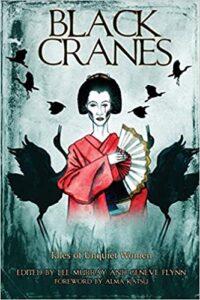A Collection of Dreamscapes by Christina Sng
Raw Dog Screaming Press, 2020
ISBN: 978-1-947879-17-1
Available: Paperback, Kindle
Christina Sng’s A Collection of Dreamscapes is a deceptive title for dark and subversive poems about myths and fairytales. Sng takes Emily Dickinson’s advice to “Tell all the truth but tell it slant” and not only slants it, but twists it into a more horrible truth than she found in the original stories. The poems are divided into five sections, with titles for the first three that are, again, deceptive. We begin with “The Love Song of Allegra”, about the exploits of a viciously murderous warrior, and recognize childhood favorites in “Fairy Tales”, involving female victims who choose revenge. Next, “All the Monsters in the World” are overcome by strong women who refuse to give up. The horror increases and becomes more explicitly described in the section called “The Capacity of Violence” and concludes with glimpses of hope in “Myths and Dreamscapes.”
The opening poems in this collection create a mythological backdrop for the horror heroines of the fairytales. However, these tales combined with predictable new narratives make the second section feel longer than it needs to be. The third and fourth sections include the most important poems of the book in terms of revealing the world’s horrors. Although the reality of pervasive evil, the idea that no place is completely safe, and the thought that we can never really know a person’s deepest darkness until it is too late are truths spun into many a story and poem, Sng brings them to greater heights through artistry. The speakers in these poems deny the existence of monsters while actually being or becoming monsters. It seems the dividing line is in the doing: sewing body parts together; performing a lobotomy; strangling the man who left you, an infant, to die in the forest. After all of the violence, the final poems suggest that there could be a fresh start, a new way, an end to the horror, but that reaching that point will also involve violence and possible death. The question remains whether the future is just as much a cruel myth or terrifying fairytale as what we have already experienced. Recommended.
Reviewed by Nova Hadley






Follow Us!